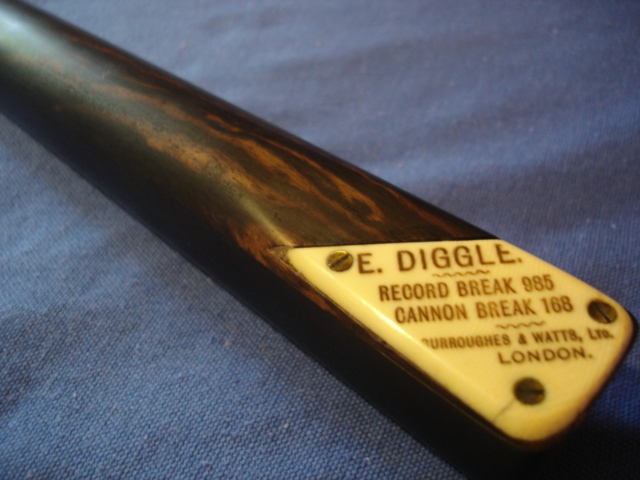This cue is a Diggle Record Break Cue. It has an ash shaft on a macassar ebony butt with an ivory badge.
The cue commemorates Edward Diggle's performances during a match against John Roberts Junior at Argyll Hall in London, from 31 December 1894 to 12 January 1895.
The record break of 985 was made on 4 January 1895. At the time, it was the third highest break on record under the spot barred rules. The two higher breaks were breaks of 1,393 and 1,017. Both of these breaks were made by John Roberts Junior in matches against Diggle at Manchester (1,393) and Glasgow (1,017).
The 985 break was a record in the sense that it was the highest break of Diggle's career. The Times (5 January 1895) described the break as a "wonderful feat", in which "there was not the semblance of a fluke".
The second break recorded on the cue was made by Edward Diggle during the same match, on the day after the 985 break. Diggle made one break of 480, which contained a record sequence of 168 consecutive nursery cannons.
Edward Diggle was one of the chief exponents of close cannon play, using what was generally regarded as a push stroke to make many of his points.
In the January 1895 match, Edward Diggle defeated John Roberts Junior by 24,000 points to 19,946 points, having received a head start of 9,000 points. However, John Roberts might be said to have had the last laugh. Following the match, he successfully backed a concerted campaign to have the push stroke abolished. The Billiards Association made this change to the rules in 1898.
This cue was manufactured by Burroughes & Watts Limited, between 1895 and 1920. The example shown in the photograph is thought to date from the period 1910-1920.
To see a later version of the same cue -


